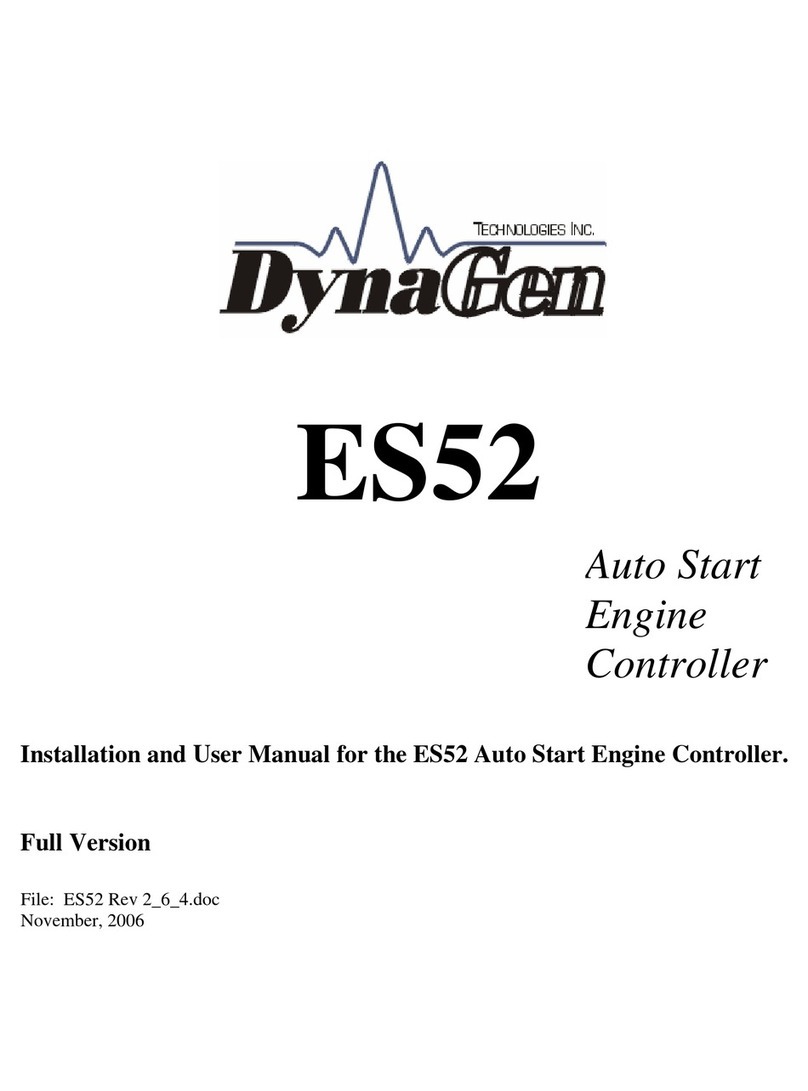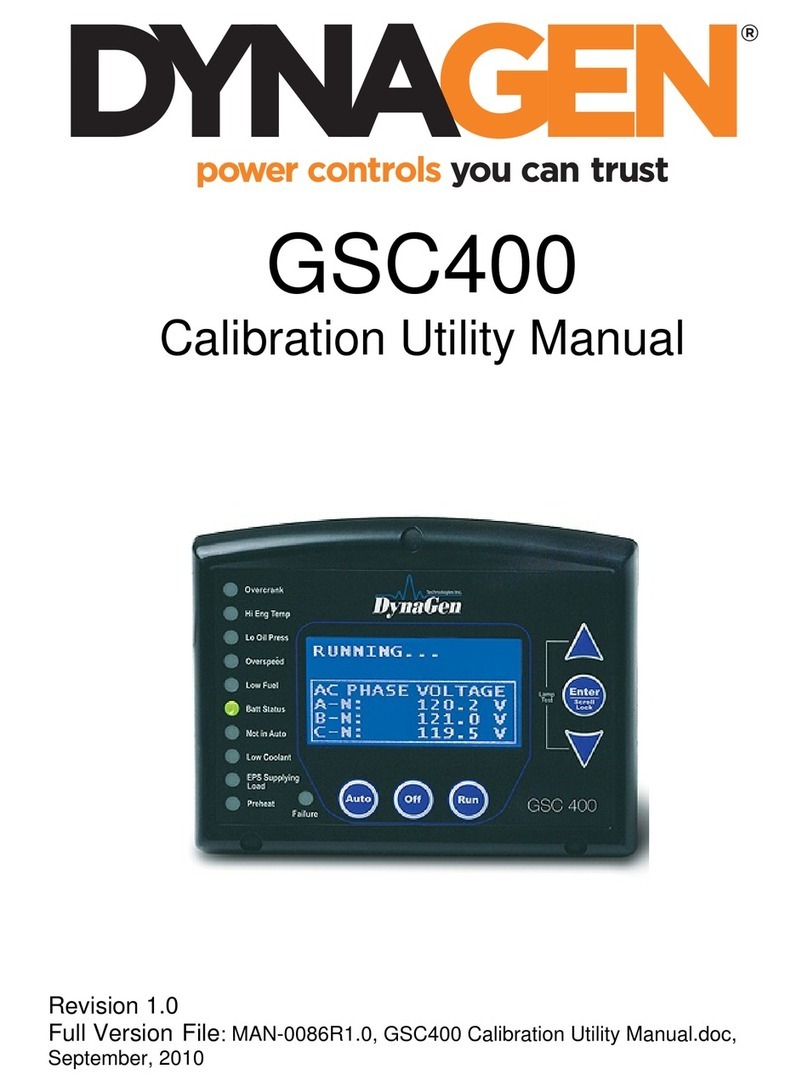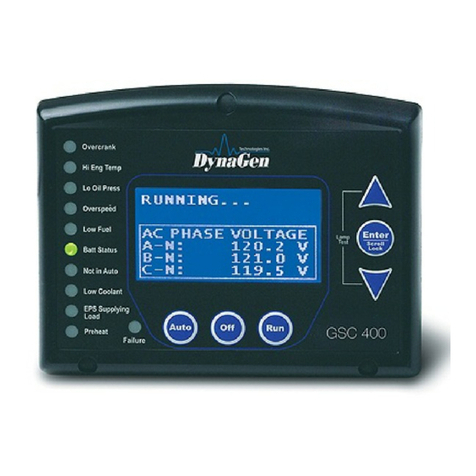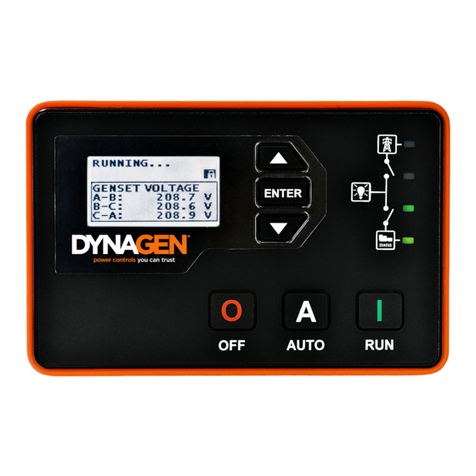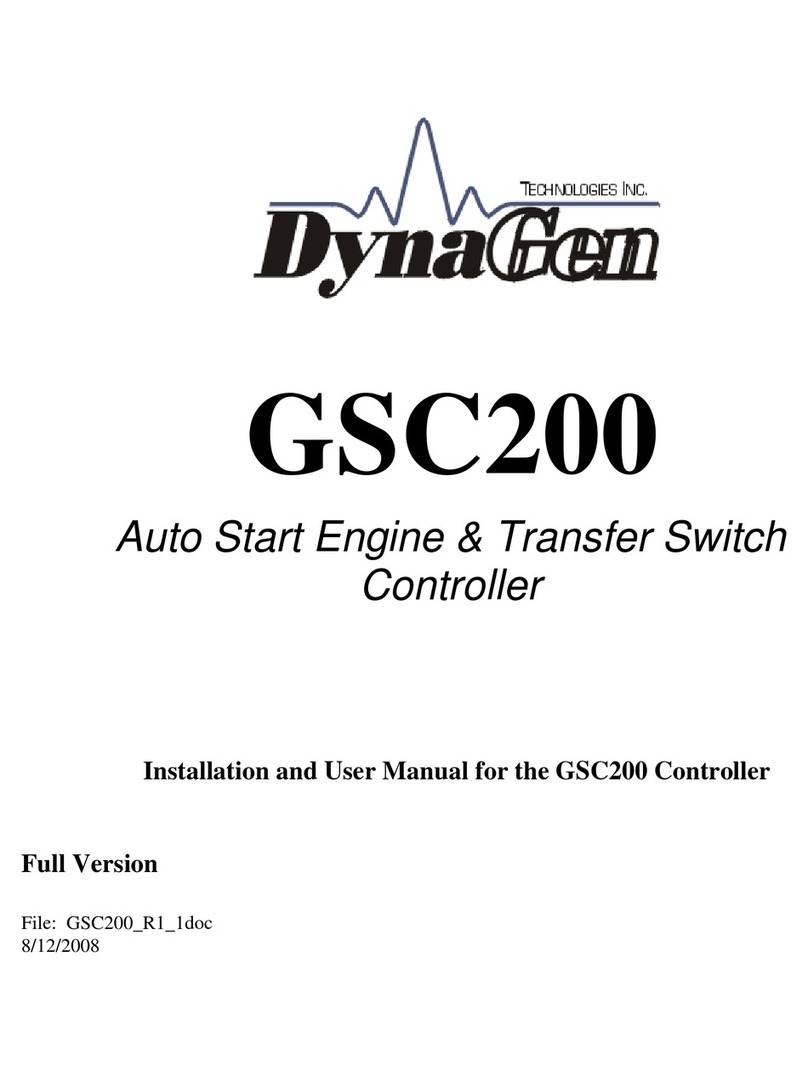
Operating & Installation Manual for the VTSC100 Transfer Switch Controller
INTRODUCTION
The VTSC100 Transfer Switch Controller provides all the necessary timing functions for the
proper operation of DynaGen’s Vigilant Series Automatic Transfer Switch. The VTSC100, in
conjunction with DynaGen’s Vigilant Series Transfer Switch, allows customer adjustability
for specific transfer conditions. In addition to adjustability, specific transfer conditions are also
represented by LED illumination from the external annunciation board.
The VTSC100 allows customer adjustability of transfer conditions such as engine start delay,
delay on neutral (available on 600A –1250A), normal to emergency delay, emergency to
normal delay, and engine cooldown. Simple potentiometer variations will determine the
amount of time the VTSC100 will wait before activating specific outputs to control transfer
switch conditions. Test points are provided on the VTSC100 for the accurate calibration of
time delays.
As the VTSC100 controls DynaGen’s Vigilant Transfer Switch functions, specific conditions
are shown by the controller on the external LED board. Specific LED’s will be illuminated or
flashing depending upon the condition or status of the controller. The VTSC100 will display
status via the external LED board when the transfer switch has been initiated to be in the
normal position, emergency position as well as when a transfer is initiated to go in to neutral
position. A status LED from the external LED board is also used to display to the user when a
power failure is simulated. When a utility failure is simulated, either manually by the user or
automatically by the engine exerciser, an LED from the VTSC100’s external LED board
indication this condition will illuminate.
